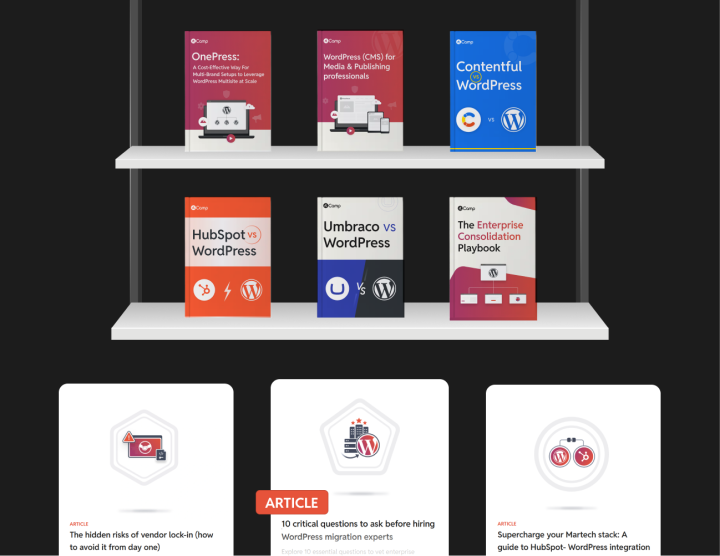Introducing OnePress: Smarter multisite thinking for multibrand enterprises (Lower costs, faster launches, and lower TCO)
At rtCamp, we handle large-scale migrations for enterprises, moving them from CMSs like Drupal, AEM, and Sitecore to WordPress. As you can imagine, enterprises generally have multiple brands. So while a migration might start with a single flagship site, it usually grows into a full-blown multi-brand migration initiative.
From experience, we’ve learned to approach every migration (and every architectural decision that follows) through a multi-site lens. Sometimes that means using WordPress Multisite. Other times, it means deploying independent WordPress sites that are connected and centrally governed.
But the idea is the same: thinking and building with the entire digital ecosystem in mind, not just one site at a time.
OnePress is our way of putting that thinking into practice
OnePress is multi-site, rethought, based on years of working with some of the most complex multi-brand migrations and WordPress implementations in the enterprise space. Simply put: it’s our multisite methodology for WordPress at scale. Whether we’re working with traditional WordPress Multisite setups or architecting standalone instances that work in concert, the goals remain consistent.
Why OnePress? Cut costs, speed up time to market, and minimize total cost of ownership
OnePress delivers enterprise-grade scale without enterprise-grade cost bloat. Here’s how OnePress keeps your multisite multibrand network efficient, fast, and cost-effective:
- Scalability without linear cost growth. Adding new brand sites doesn’t mean starting from scratch (costs scale more gradually compared to managing siloed CMS stacks).
- Faster time to market. Launching new sites or campaigns is faster with prebuilt templates and reusable architecture, translating to saved opportunity costs.
- Reduced development duplication. Shared design systems, block libraries, and components mean you build once and reuse across sites, cutting dev time and cost per site.
- Efficient onboarding, training, and resource utilization. Unified editorial workflows and interfaces minimize learning curves and reduce training time for new teams. You also save on hiring costs by sharing resources across your different brands. And this applies to both your technical and editorial teams.
- Shared DevOps and QA pipelines. Automations and centralized CI/CD reduce deployment overhead and error-related costs across multiple sites.
- Consolidated vendor management. Fewer tools, plugins, and integrations to license and manage reduces both spend and administrative overhead.
- Lower total cost of ownership (TCO). Centralized updates, shared infrastructure, and standardized tooling reduce ongoing maintenance and hosting costs.
Is OnePress just WordPress Multisite under the hood?
Not quite.
As we said above: OnePress is multisite, rethought. It’s not limited to the native WordPress Multisite architecture. Instead, it’s a mindset and methodology, one that treats multiple sites as a cohesive platform, not a scattered collection of individual builds.
Depending on your needs, OnePress might use Multisite, or it might involve orchestrated standalone sites built with common tooling, governance layers, and infrastructure, all delivering the benefits of scale, consistency, and speed without compromising flexibility.
OnePress is rethinking how WordPress powers multibrand enterprises
Instead of treating each site as a separate project, OnePress encourages you to think in scalable systems, where design, governance, and infrastructure serve your complete portfolio, not just one property at a time.
When done right, this approach can unlock cost efficiencies across your entire digital presence.If you’re planning a multisite migration or struggling with fragmented WordPress instances, OnePress might be exactly what you need. Let’s talk.







